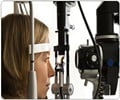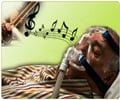Closing your eyes while listening to scary music makes it scarier, say researchers.
Closing your eyes while listening to scary music makes it scarier, say researchers.
A group of neuroscientists claim to have discovered that a brain centre involved in sensing emotion and fear called the amygdala kicks into action when volunteers listen to scary music with eyes closed, reports New Scientist."A lot of time we do like to close our eyes when we listen to music, we feel like this is a more powerful experience," says Talma Hendler, a neuroscientist at Tel Aviv Sourasky Medical Center in Israel, who led the new brain imaging study.
Previous research suggests that shutting eyes heightens a person's emotional response to the outside world.
In order to find any neural basis for this effect, Hendler's team scanned the brains of 15 volunteers while they listened to film scores - "kind of Hitchcock-like movies," she says - and less emotive keyboard tunes with their eyes open or shut.
Not surprisingly, participants rated the eerie-sounding music, which was laced with staccato strings, ominous trombones, and weird effects - as more emotional than the "elevator music"-like keyboard tunes.
While under the functional-MRI scanner, horror film scores elicited significantly more amygdala activity in the brains of volunteers who kept their eyes shut, compared to when they kept eyes open. Participants' brains responded no differently to the neutral music whether their eyes were closed or open.
None of these changes occurred when volunteers listened to scary music in total darkness, suggesting that temporary blindness doesn't explain the results, Hendler says.
Source-ANI
SRM
 MEDINDIA
MEDINDIA



 Email
Email









